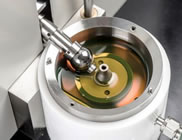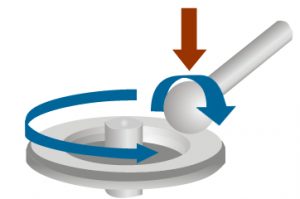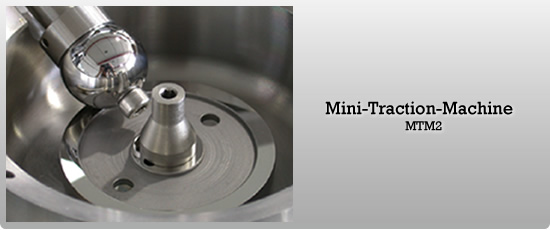
The MTM2 test rig from PCS Instruments is a ball-on-disc test rig that is used to investigate the friction of lubricated and non-lubricated rolling element pairings.
Ball and disc are driven separately, creating variable slip. As standard, a polished 100Cr6 ball is used as the upper test specimen (D 19.05 mm). With adapters, however, O-rings or similar geometries made of other materials can also be used
| Test bench parameters | |
| Frictional force range | 0 – 10 N |
| Normal force | 5 to 75 N |
| Contact pressure | 520 MPa – 1250 MPa (standard ball) up to 3.1 GPa (alternative geometries) |
| Temperature | RT up to 150° C |
| Type of movement | Rolling (rollers with variable sliding component) |
| Friction conditions | Rolling friction |
| Speed | up to +/- 4 ms-1 |
| Lubricants | Oil, grease initial lubrication |
| Measured variables | Wear, normal force, friction force |
| Test specimen | Ball, O-ring, cylinder |
Testing of wheel/rail lubricants
The method described in CEN/TS 15427-2-2:2023 – TC for investigating the friction and wear behavior of wheel flange and railhead lubricants (Top-of-the-rail – ToR) is relatively new. A precisely defined quantity of grease is applied to the base disk. After a run-in program, slip ratios in the range 0.25 to 10% are then run at three speeds (50 mm/s, 1000 mm/s and 3800 mm/s).
Adhesion diagram (below) Adhesion coefficient as a function of the slip – roll ratio (SRR)
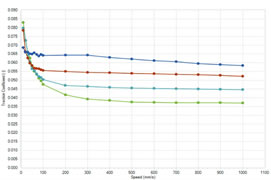
Stribeck diagram (top): Friction value as a function of sliding speed; temperatures from 40° C (blue) to 100° C (green) in 20° increments.
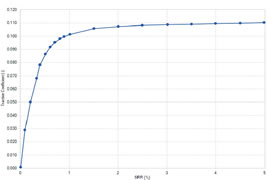
Traction curve (bottom): Coefficient of friction as a function of the slip – roll ratio (SRR)
